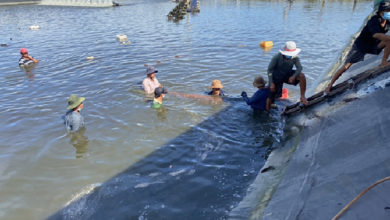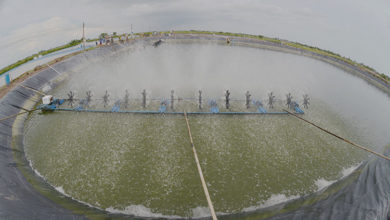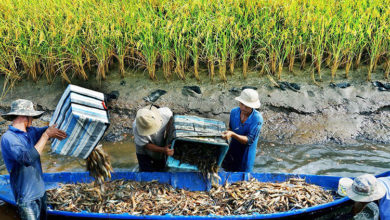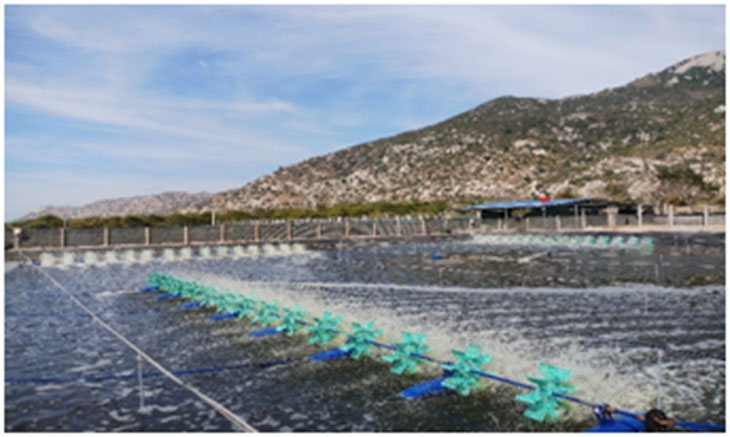The cost of feed accounts for up to 60% of shrimp production costs
According to Mr. Tran Dinh Luan, Director of the Fisheries Department, the Vietnamese shrimp industry needs to improve quality and reduce costs to compete in the international market.
On October 31, the Fisheries Department (Ministry of Agriculture and Rural Development) collaborated with the Department of Agriculture and Rural Development of Ca Mau Province to organize a consultation workshop titled “Solutions for Effective Shrimp Farming”.
The workshop attracted over 150 delegates, including scientists, businesses, cooperatives, shrimp farmers, and representatives from the leadership of the provinces: Ca Mau, Bac Lieu, Tra Vinh, Soc Trang, and Kien Giang.
This marks the fourth consecutive year that the seafood export turnover has exceeded 1 billion USD
Mr. Chau Cong Bang, Deputy Director of the Department of Agriculture and Rural Development of Ca Mau Province, stated that Ca Mau has strengths in aquaculture with over 280.000 hectares and a coastline of 256 km. Each year, the province produces approximately 230.000 tons of farmed shrimp, with a plan to reach 243.000 tons by 2025.

Mr. Chau Cong Bang, Deputy Director of the Department of Agriculture and Rural Development of Ca Mau Province. Photo: Trong Linh.
Despite facing many challenges for a long time, including significantly low and prolonged raw shrimp prices, Ca Mau’s shrimp industry has recently seen a price increase, which is seen as a positive signal to boost growth in the final stages of 2024.
According to Mr. Bang, although the shrimp export turnover of Ca Mau reached over 1 billion USD in 2023 – marking the fourth consecutive year the province has surpassed this milestone – the profits for local farmers are limited, even within the shrimp-rice farming model.
“We have production, but the profits for shrimp farmers and exporting processing businesses are not sufficient and, in some cases, result in losses. This is a major challenge for the shrimp industry”, Mr. Bang stated.
He emphasized that this workshop needs to clarify the current difficulties facing the shrimp industry to identify suitable solutions that will help local shrimp farming and improve the efficiency of brackish water shrimp farming.
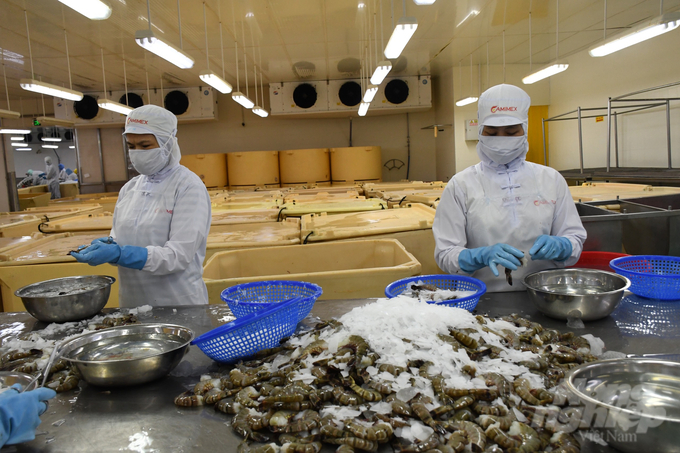
This is the fourth consecutive year that Ca Mau Province has achieved shrimp exports exceeding 1 billion USD. Photo: Trong Linh.
Solutions to reduce shrimp farming costs
During the workshop, participants showed a keen interest in various issues, including the quality control of seed stocks, seasonal farming practices, stocking densities, disease management, production cost reduction, and forecasting consumption patterns in importing markets. The aim is to enhance the shrimp export value chain and improve the income of shrimp farmers.
Dr. Phan Thanh Lam from the Aquaculture Research Institute II (MARD) highlighted that the current value chain poses significant limitations for the shrimp sector. Among the challenges are disease management, insufficient sustainable production practices, a lack of vertical integration within the production chain, inadequate collaboration between service support entities, and restrictions on investments in comprehensive infrastructure.
Addressing the difficulties in establishing effective production linkages, Mr. Lam remarked that the existing transaction methods for buying and selling shrimp products remain underdeveloped. Most transactions occur in a free market context – dictated by fluctuating market prices – or through seasonal cooperation arrangements that lack stringent quality controls. There is a notable absence of comprehensive and effective investment partnerships that could foster greater efficiency and profitability within the industry.
Regarding the challenges in establishing production linkages, Mr. Lam pointed out that transaction methods for buying and selling products remain at a low level, primarily relying on a free market (based on current market prices) or seasonal cooperation, with little control over quality. There are very few comprehensive and effective investment cooperation methods.
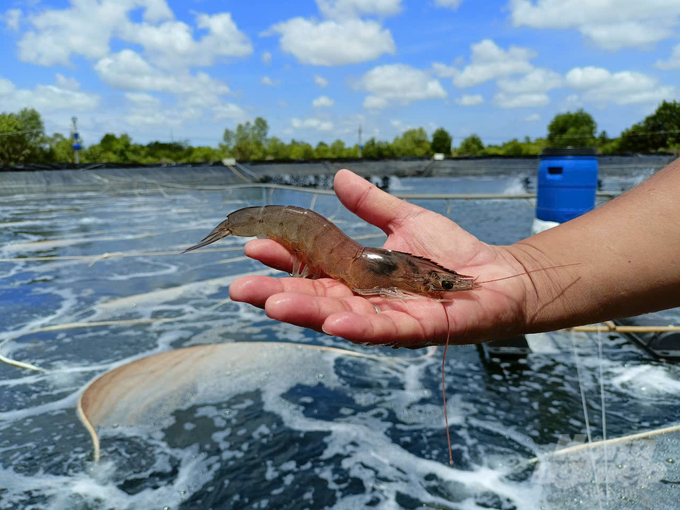
The workshop discussed solutions for effective brackish water shrimp farming. Photo: Trong Linh.
With the current development trends, the operational model of cooperatives is gradually transitioning from managing value chains based on free markets and spot transactions to a more coordinated approach termed a “mandatory system”.
Mr. Lam pointed out that key practices will focus on the breeding of shrimp and crabs, utilizing beneficial microorganisms to stabilize the farming environment, and developing natural feed sources. He highlighted that cultivation techniques and management practices will gain more emphasis, particularly with a move toward ecological certification.
He further elaborated that feed costs represent the largest expense, accounting for about 60% of total costs, followed by seed costs at approximately 10%. In systems that involve tank-based farming, the survival rate of shrimp during the transfer process is crucial as it impacts the productivity and production costs.
“Implementing advanced technology and automating the entire system – from environmental management and feeding to harvesting – will help reduce labor costs and increase productivity. Investing in closed-loop systems will lower water costs and improve environmental management while enhancing shrimp productivity and quality”, Mr. Lam shared.
Production and profit must go hand in hand
Mr. Tran Dinh Luan, Director of the Fisheries Department (MARD), stated that the Vietnamese shrimp industry is facing numerous difficulties and challenges, particularly concerning diseases in aquaculture. Diseases such as white spot syndrome, early mortality syndrome (EMS), and various bacterial infections have severely affected both shrimp productivity and quality. The management of disease outbreaks in farming ponds is still inadequate, leading to a high risk of disease outbreaks, especially in the context of climate change.
“The impacts of climate change are exacerbating extreme weather events such as storms, floods, and droughts, which in turn affect water quality and create challenges in maintaining optimal farming conditions. Additionally, saltwater intrusion is compromising water quality, thereby negatively impacting the health of farmed shrimp”, Mr. Luan explained.
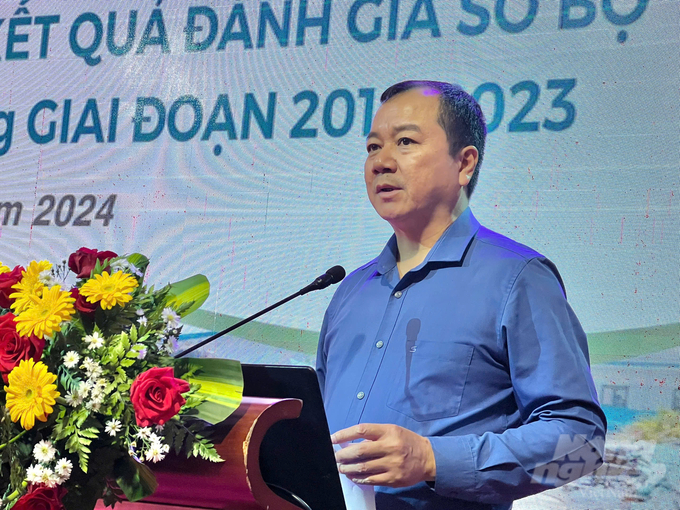
Director of the Fisheries Department Tran Dinh Luan: The Vietnamese shrimp industry is facing numerous difficulties and challenges, particularly related to diseases in aquaculture. Photo: MD.
According to Mr. Luan, international competition and trade barriers are becoming increasingly significant. Countries such as India, Ecuador and Indonesia also have well-developed shrimp industries and strong competition. Vietnam needs to improve quality and reduce costs to compete in the international market. Trade barriers and strict standards from major importing markets like the United States, the EU, and Japan are increasingly rigorous regarding quality, traceability and food safety.
The production costs, feed prices, and veterinary medicine expenses for shrimp in Vietnam remain relatively high. Additionally, cost control measures are not yet effective, resulting in Vietnamese shrimp not being competitive enough compared to other countries.
The difficulties in accessing new technologies and techniques mean that many shrimp farmers still rely on traditional farming practices, lacking investment in modern technology and sustainable farming processes. Access to new technology for disease management, productivity improvement, and environmental protection remains limited. The shrimp industry is also facing a shortage of skilled personnel with specialized knowledge to implement modern and sustainable shrimp farming processes, as well as to meet the demands of major export markets.
According to Mr. Luan, increasing productivity and output must go hand in hand with ensuring profits for farmers and businesses. The low profitability of shrimp farmers is attributed to several factors, but the primary reasons include high production costs, the increasing prevalence of diseases, and ongoing challenges in disease management. Unlike poultry or pigs, which can be managed within a single facility, shrimp farming involves numerous large ponds and often lacks adequate infrastructure, making disease management particularly difficult.
Source: VAN


